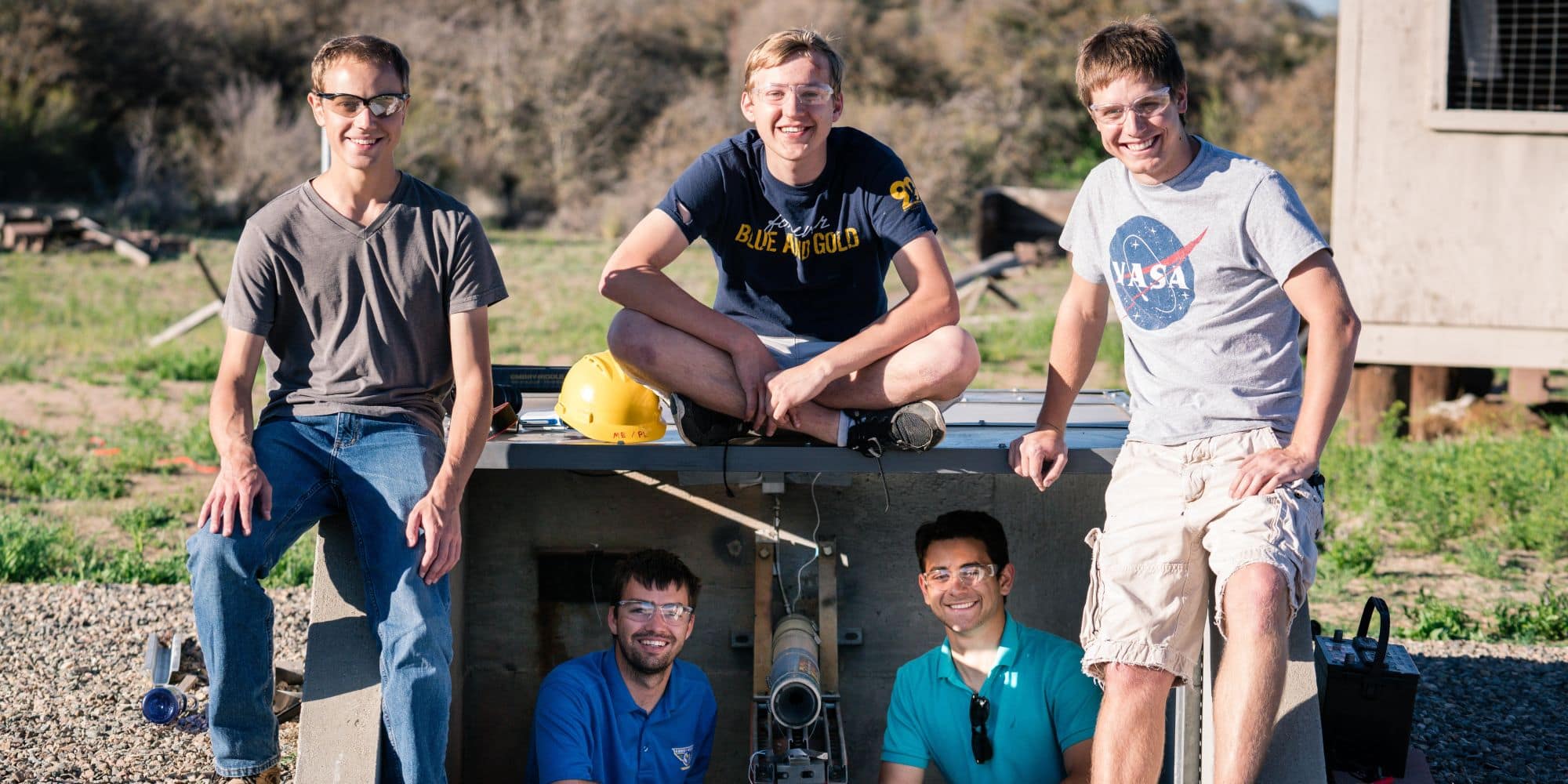Eagle Engineers Set Sights on Rocket Testing and Development
Aerospace Engineering major Bryce Smoldon helped lead a student team that develops and tests rockets.

To members of Embry-Riddle Aeronautical University’s Rocket Development Lab, the sky is not a limit. It’s a challenge.
Dedicated to building bigger and better rockets and rocket engines, the club attracts “the most motivated and dedicated individuals on campus, working on some of the largest, most complex and coolest projects,” said former club President Bryce Smoldon (’20), an Aerospace Engineering graduate now working at the Naval Air Systems Command (NAVAIR).
Not many undergraduate students have the chance to design, build and test their own liquid oxygen-fueled rockets.
But thanks to Embry-Riddle’s Propulsion Laboratory & Rocket Test Complex, which is supported in part by philanthropy, students at the Prescott Campus have opportunities to work on solid, hybrid and liquid propulsion projects, including liquid flight vehicles.
“Our undergraduates are designing and building rockets comparable to many university graduate programs,” said Elliott Bryner, the faculty advisor and an assistant professor of mechanical engineering. “We can do testing of rocket engines and motors. They are able to get hands-on with these design, test and build operations, really from day one.”
How does a rocket testing lab work?
The Rocket Development Lab has more than 50 members from a variety of degree programs, including Mechanical Engineering and Aeronautics, and has hit some significant milestones. Club members created a rocket that flew 2.5 times the speed of sound and reached 36,000 feet, and also designed a bi-propellant rocket to compete in the Friends of Amateur Rocketry (FAR) Mars Society Launch contest.
The club regularly opens its working laboratory for individuals and teams to work on projects throughout the semester and is open to ambitious students on any degree track.
In addition to Bryner, the club also features faculty mentors such as Dr. Neil Sullivan and Professor Andy Gerrick.
The lab and test complex features three rocket test cells and a reinforced control room. The newest addition to this complex, Test Cell 3, is an enclosed liquid rocket test facility capable of handling rockets using cryogenic propellants.
“Our students have the opportunity to get in and take leadership roles,” Bryner said. “They make decisions and lead the teams, while I supervise.”
Purchasing equipment and fuel for rockets is not cheap, he said, so philanthropy, including donated equipment, supplies and funding, is critical to making these opportunities possible for students.
Where you can work with an Embry-Riddle engineering degree?
The Rocket Development Lab experience helps students land internships and jobs with aerospace and space companies, along with bolstering the university’s reputation for producing top-notch graduates.
“We can talk in class about how a rocket works, but being able to take what they are learning in the classroom and applying that in the test cell requires material support and infrastructure,” Bryner said. “Philanthropy has really made a difference in making our program successful.”
Max Kauker (’20), now a mechanical engineer at Parallel Flight Technologies in California, said he initially got involved with the lab to socialize with fellow rocket enthusiasts, but it turned into more. He was part of the Zenith Propulsion project, a capstone team that tested a liquid bi-propellant rocket.
“Having access to these incredible resources has allowed me to network with many high-profile people in industry,” he said.
For students, it is a huge advantage to gain such real-world experience, said Bryner. It helps them land internships and jobs with aerospace and space companies, plus bolsters the university’s reputation for producing top-notch graduates.
Mechanical engineering student Zoe E. Brand (’23) said she came to the lab barely knowing the basics of rocketry and she is now an Arizona Space Grant intern and chief engineer for the lab.
“The lab has given me the opportunity to have hands-on experience with the liquid rocket testing stand on campus,” she said. “In the club, I have been able to apply the knowledge from classes to projects that a normal undergraduate student wouldn't have the opportunity of doing.”
Are you ready for your opportunity? Apply now.
Check out our other degrees and programs.
 Previous Story
Previous Story

